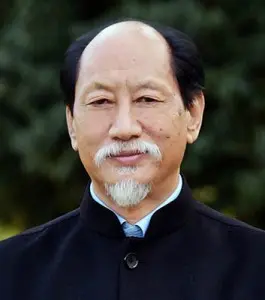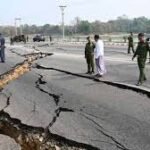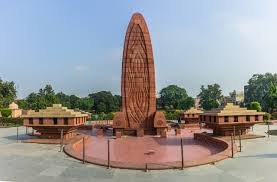Exploring the Legacy: List of Former Chief Ministers of Nagaland
Nagaland, a northeastern state of India, has seen a dynamic political landscape since its inception. The list of former Chief Ministers of Nagaland is a testament to the diverse leadership that has shaped the state’s governance over the years. Let’s delve into the chronicles of these influential leaders who have left an indelible mark on Nagaland’s political history.
1. P. Shilu Ao: The Pioneer P. Shilu Ao, an eminent Naga leader, served as the first Chief Minister of Nagaland after it attained statehood in 1963. A prominent figure in the Naga National Council, Ao played a pivotal role in shaping the early trajectory of Nagaland’s governance.
2. T.N. Angami: Steadfast Leadership T.N. Angami assumed office as the second Chief Minister of Nagaland in 1966. His tenure was marked by efforts to foster socio-economic development and maintain stability in the state amidst various challenges.
3. Hokishe Sema: Advocating for Progress Hokishe Sema served as the Chief Minister of Nagaland from 1969 to 1974. His administration focused on infrastructure development, education, and enhancing governance mechanisms to empower the people of Nagaland.
4. Vizol Angami: Navigating Through Turbulence Vizol Angami’s tenure as Chief Minister from 1977 to 1980 witnessed significant political upheavals in Nagaland. Despite the challenges, his leadership aimed at fostering dialogue and reconciliation for sustainable peace and development.
5. K.L. Chishi: Championing Administrative Reforms K.L. Chishi, who held office from 1980 to 1982, emphasized administrative reforms and initiatives to address the socio-economic disparities prevalent in Nagaland. His tenure laid the groundwork for future developmental endeavors.

Why this News is Important:
Significance of Understanding Nagaland’s Political Evolution: Understanding the list of former Chief Ministers of Nagaland is crucial for aspirants preparing for government exams, especially those targeting positions in the civil services, as it provides insights into the state’s political evolution and governance dynamics.
Appreciating Leadership Styles and Policy Initiatives: Studying the leadership styles and policy initiatives of past Chief Ministers offers valuable lessons in governance, which can be instrumental for aspirants aiming for administrative roles in Nagaland or similar contexts.
Historical Context:
Formation of Nagaland: Nagaland attained statehood on December 1, 1963, becoming the 16th state of the Indian Union. The formation of Nagaland was a culmination of decades-long struggles by the Naga people for self-determination and recognition of their distinct identity.
Naga Political Movement: The Naga political movement, spearheaded by organizations like the Naga National Council (NNC), played a significant role in shaping Nagaland’s political landscape. The demand for autonomy and eventual statehood was a central theme of this movement.
Key Takeaways from “List of Former Chief Ministers of Nagaland”:
| Serial Number | Key Takeaway |
|---|---|
| 1. | P. Shilu Ao was the first Chief Minister of Nagaland. |
| 2. | T.N. Angami served as the second Chief Minister. |
| 3. | Hokishe Sema’s tenure focused on infrastructure development. |
| 4. | Vizol Angami faced political upheavals during his tenure. |
| 5. | K.L. Chishi emphasized administrative reforms. |
Important FAQs for Students from this News
1. What is the significance of understanding the list of former Chief Ministers of Nagaland for government exam preparation?
- Understanding Nagaland’s political history is crucial for aspirants, especially for exams that assess knowledge of state governance and leadership dynamics.
2. How can knowledge of past Chief Ministers’ tenures benefit aspirants preparing for civil service exams?
- Studying leadership styles and policy initiatives provides insights into governance principles and historical context, which can be relevant for exam questions on administration and state affairs.
3. What role did the Naga political movement play in shaping Nagaland’s political landscape?
- The Naga political movement was instrumental in the state’s journey towards autonomy and eventual statehood, reflecting the aspirations of the Naga people for self-determination.
4. How does familiarity with historical events related to Nagaland’s formation contribute to exam preparation?
- Understanding the formation of Nagaland and the struggles of its people provides context for questions related to statehood, regional politics, and the socio-cultural landscape of northeastern India.
5. Why are administrative reforms and infrastructure development highlighted as key takeaways from the tenure of certain Chief Ministers?
- Administrative reforms and infrastructure development initiatives showcase governance priorities and strategies aimed at addressing socio-economic challenges, which are pertinent topics for government exams assessing policy implementation and development planning.
Some Important Current Affairs Links



















 Exciting News!
Exciting News!  Join Our Telegram Channel Now!
Join Our Telegram Channel Now!
 Join our Telegram channel for a thrilling adventure into the world of daily current affairs.
Join our Telegram channel for a thrilling adventure into the world of daily current affairs. 
 Don’t miss out on the latest updates and insights! Click to join now and be part of the knowledge revolution!
Don’t miss out on the latest updates and insights! Click to join now and be part of the knowledge revolution! 
